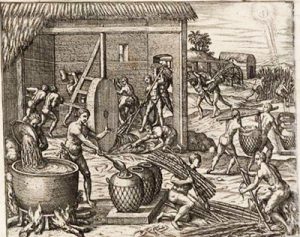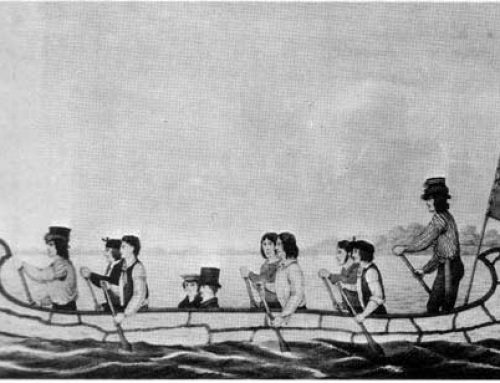
Slaves on a sugar plantation about 1550 AD
When European explorers came to North America about 1500 AD, they soon saw that the islands of the Caribbean – Cuba, Jamaica and Haiti, for example – had the right weather for growing sugar cane, and they immediately started sugar cane farms there. As they had in Europe, they forced West African people to work as slaves on these farms.
From the 1500s until the early 1800s, ships carried sugar (often in the form of molasses, a kind of liquid brown sugar) from these islands to England and sold it there. Then English ships brought things like china and steel knives to West Africa and traded them for slaves, and the slaves travelled to the Caribbean on slave ships to work on the sugar plantations. We call this the Triangle Trade, because it involved three places – the islands of the Caribbean, England, and West Africa.

Sugar beet (from Germany)
Sugar was still very expensive in Europe, so European scientists kept looking for some way to make sugar closer to home. By 1590, a French scientist got a sweet syrup from beets, but there wasn’t any way to do it cheaply enough. People kept working on it, and by 1801, the first factory opened in Europe to make sugar from sugar beets. By 1815, there were sugar beet factories all over Europe, and in 1838 people started to build sugar beet factories in the United States as well.
In 1834, as cane sugar became less valuable, England decided to free the sugar slaves in Jamaica, but many poor people in the Caribbean today still work cutting sugar cane for sugar. Today you can buy either beet sugar or cane sugar. About 2/3 of the sugar people eat in the world today is cane sugar, and about 1/3 is beet sugar.
With cheaper sugar, manufacturers started to add sugar to all kinds of foods, from chocolate bars to tomato ketchup. Check the labels – what do you eat that has sugar added?
Learn by Doing – Making candy
Where did sugar come from?
Bibliography and further reading about sugar:




